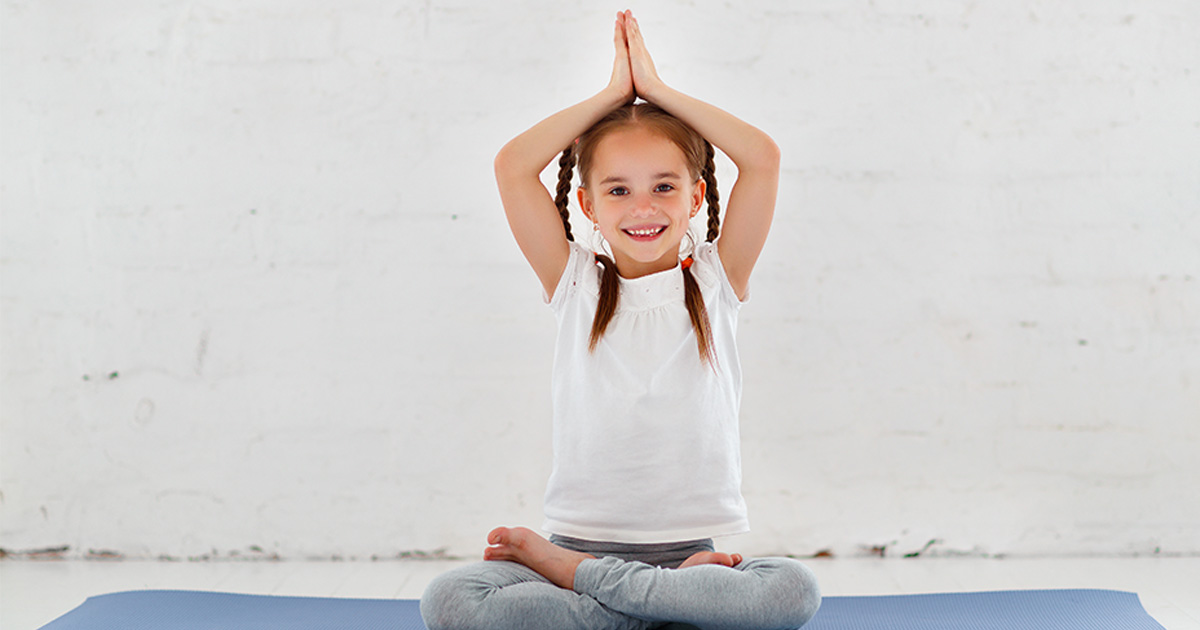- 855.471.2589
- Schedule a Tour

Children experience anxiety, just like adults. And like adults, anxiety affects their mental, emotional, and physical well-being. For example, anxiety can have a strong impact on a child’s immune system and their ability to learn, interact socially, store memories, and focus. Breathing and mindfulness exercises can help regulate cortisol levels and lower the heart rate, which can combat health issues related to anxiety, no matter how old you are.
Mindfulness is being present and aware in the moment. It encourages emotional regulation and teaches children how to observe their thoughts and feelings calmly and without judgment. This has a positive impact on children’s development in all domains.
- Emotional: Increases resilience and reduces anxiety
- Physical: Improves sleep and reduces stress
- Cognitive: Boosts attention and self-regulation
- Social: Enhances empathy and communication
In the last few years, several research studies have been published that examine mindfulness-based interventions for children. Mindfulness has been found to be associated with indicators of well-being, including optimism and positive feelings. It has also been linked to lower rates of psychological and emotional distress, such as negative feelings, depression, and anxiety. Additionally, research has found a relationship between mindfulness and empathy.
Mindfulness is a Powerful Tool
In our classrooms, we promote mindfulness through the Positive Behavior Support process. For example, our teachers implement experiences focused on social-emotional development (i.e., emotional awareness, self-regulation, and empathy) as part of our Learn as We Grow curriculum. The classroom environment includes a Reflection Center providing a calm space for children to practice mindfulness, including breathing techniques, self-comforting strategies, emotional awareness experiences, and social connections.
9 Ways to Promote Mindfulness at Home
- Visualization: Encourage children to lie down and visualize their favorite place. What does it look like? What can they hear? What can they smell?
- Deep Breathing: Practice breathing in slowly as you count to three, then exhaling slowly as you count to three again. Encourage children to focus on feeling calm and in control.
- Count to 10: Teach children to slowly count to 10 when they need a moment. Encourage them to take deep breaths in between numbers to inspire a natural reset.
- Tense and Release: This is a technique that helps children tense their bodies and then slowly let the tension go. An easy way to do this is to clench their fists and then practice slowly opening their hands.
- Practice Yoga: Teach children different yoga positions to help them calm themselves and refocus. Try reading a children’s book about yoga to help them visualize the stretches.
- Be the Bubble: Give children bubbles and encourage them to practice slowly blowing the bubbles. This allows them to center their focus on the action to naturally help them self-regulate.
- Hand Over Heart: Encouraging children to stop and put their hand over their heart allows them to begin breathing at the rate of their heart. Again, this encourages children to calm down when they’re feeling overwhelmed.
- Body Scan: Teach children to check in on their own emotions. How are they feeling? How does that feeling feel in their body? For example, when they’re angry, they may notice their head feels hot. Evaluating emotions can help them learn to identify and manage them.
- Calm My Body: Practice lying on the floor until their body has calmed down. While doing so, they can practice breathing, count to 10, or sing a song in their head.
Want to dig in a little deeper to help your child develop these techniques? Here is a link to a Mindfulness Workbook, available as part of our library of helpful parent resources.
